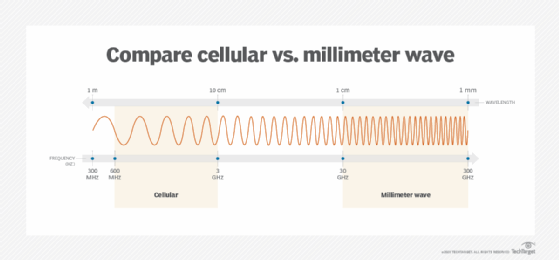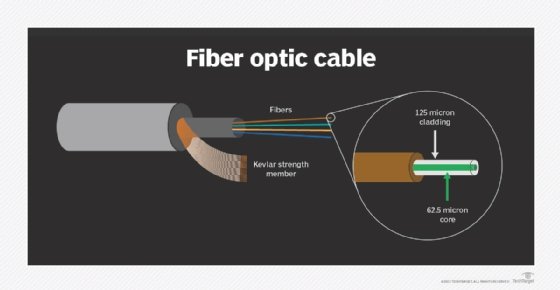propagation delay (original) (raw)
What is propagation delay?
Propagation delay is the amount of time required for a signal to be received after it has been sent; it is caused by the time it takes for the signal to travel through a medium. Propagation delay is of primary interest in electronic circuit design and computer networking, although all signals will inherently experience some form of propagation delay.
The fundamental limit on propagation delay is the speed of light (c). Since nothing can travel faster than light and light has a finite speed, there will always be some delay as a signal moves from source to destination. This is true for all signals from small to great and distances from short to vast.
An everyday example of propagation delay is the difference between when people can see a strike of lightning flash and when they hear the thunder. The flash from the lightning travels incredibly quickly, at the speed of light of about 300,000 kilometers per second (km/s) or 186,000 miles a second. Sound travels much slower in air, at only about 343 meters per second (m/s) or 1 mile in 4.7 seconds. Therefore, they hear the thunder after they see the flash of lightning due to the much longer propagation delay of sound than light.
Propagation delay in electronic circuits
Electrical engineers need to take propagation delay into account when creating integrated circuits (ICs). In this context, propagation delay is defined as the amount of time required after an input signal is applied and has stabilized to the input of a circuit to the time that the output of the circuit has stabilized to the correct output signal. This is symbolized as tpd. It can also be called gate delay and is more related to the amount of time it takes for the individual components, called logic gates, to change than the time for the signal to move from one point to another.
This is due, in part, to the time it takes for an electrical charge to move through a semiconductor and for the individual gates to stabilize at the correct output. The speed that the charge can move is roughly 100,000 m/s to 200,000 m/s depending on the semiconductor material used. Temperature can also affect the material.
The propagation delay will also depend on the logic family used, either transistor-transistor logic or complementary metal-oxide semiconductor. But the specifics can vary greatly depending on the exact type used.
Propagation delay is small, in a human scale, often measured in nanoseconds or picoseconds. Each gate must stabilize before the next one in the sequence can be read, so the total time for each gate in the longest possible output sequence is added together to form the total delay.
Modern ICs can have billions of total gates and operate at incredible speed. Inconsistent propagation delay in an IC can cause data errors or race conditions on a chip. Therefore, the propagation delay is an important factor in high-speed circuit design and is a limiting factor of the processing speed, or hertz, that a processor can run at.
Propagation delay in networking
Propagation delay is present in data networks as well, as it takes time for the signals to travel from the point of transmission to the receiver. This can also be called the transmission delay, flight time or time of flight for the signal. The two major factors that form the total propagation delay are the speed with which the signal travels and the total distance traveled.
The speed can vary greatly depending on the type of signal and the medium through which it is traveling. A direct line of sight wireless radio signal travels at the speed of light and is the fastest possible form of transmission. This enables millimeter wave (mmWave) 5G new radio (5G NR) systems to achieve high speeds in perfect conditions.

MmWave is the technology used in 5G NR wireless communications.
Other factors, though -- such as the inverse square law, wireless spectrum collision and curvature of the earth -- make wireless communication not the preferred method of long-distance terrestrial data transmission.
Electrical signals through copper wire travel at less than the speed of light. The actual speed will vary depending on the thickness and quality of the wire. It can be from 0.77c to 0.59c, or roughly two-thirds the speed of light. This can also limit the total cable length on a single collision domain at a certain bit rate. If it takes too long for a signal to travel the total length of the wire, it is possible for the receiver to start transmitting before the transmission has reached it, thereby causing a signal late collision error on the wire.
This is why the cable length of base 10 Ethernet is limited to 500 m with four total repeaters.
Light traveling through fiber optic cables travels slower than light through a vacuum. The speed of light depends on the refractive index of the medium through which it travels, and the speed light travels through optical fiber is about two-thirds the speed of light in a vacuum, or about 200,000 km/s.

Used for long-distance and high-performance networking, fiber optics refers to the technology and medium associated with transmitting information as light pulses along a glass or plastic strand or fiber.
Other factors can also contribute to slower data transmission. Intermediary electronics, such as signal repeaters, or additional processing may add to the total transmission time. Measurements of latency also typically give the total round-trip time for a signal to go from the transmitter to the receiver and then back to the original transmitter.
This was last updated in May 2021
Continue Reading About propagation delay
- Reduce cloud latency for remote employees and offices
- How to improve wireless network capacity and performance in 3 steps
- High-performance interconnects and storage performance
- How to perform packet loss tests and how they work
- Wi-Fi 6 explained: Speed, range, latency, frequency and security
 NTT claims world record for optical fibre transmission
NTT claims world record for optical fibre transmission  By: Joe O’Halloran
By: Joe O’Halloran  The pros and cons of optical wireless communication
The pros and cons of optical wireless communication  By: Venus Kohli
By: Venus Kohli  What is wavelength?
What is wavelength?  By: Linda Rosencrance
By: Linda Rosencrance  NEC, NTT claim success in first-of-its-kind subsea optical fibre cable trial
NEC, NTT claim success in first-of-its-kind subsea optical fibre cable trial